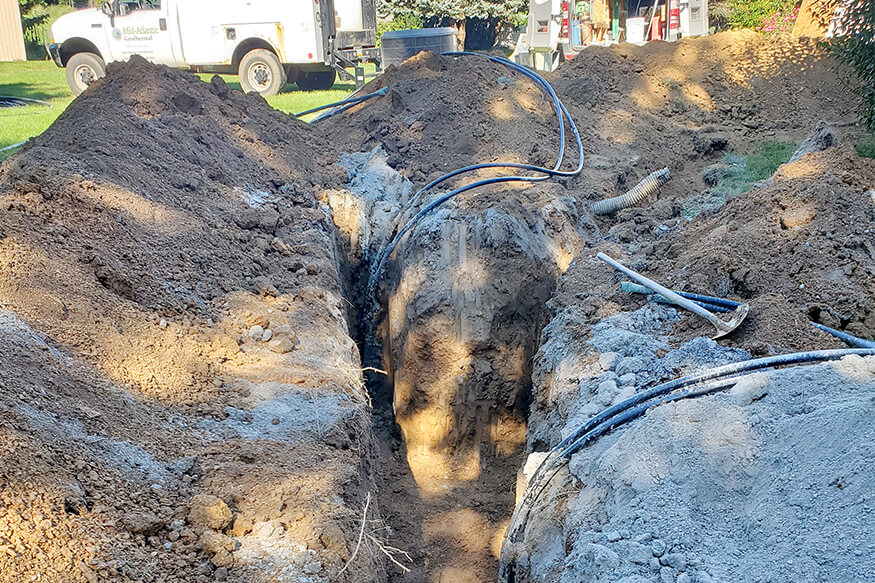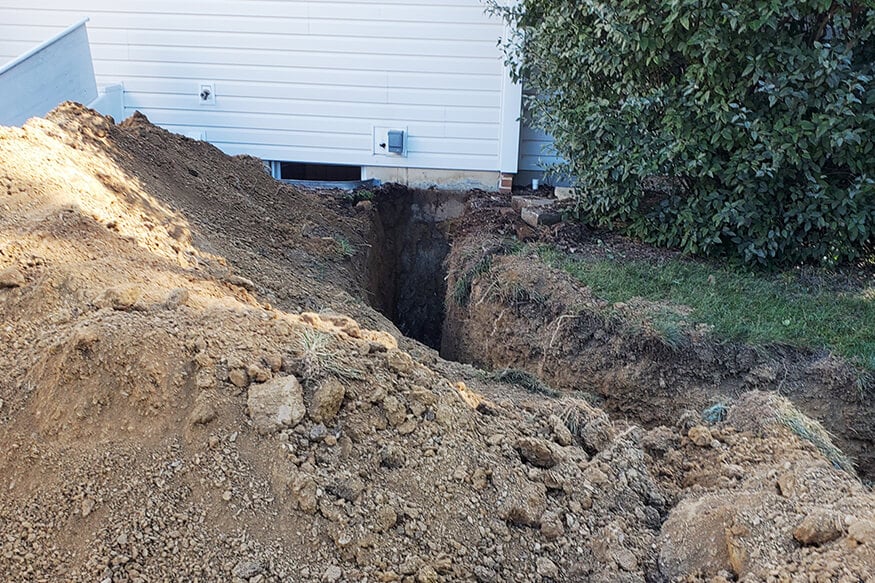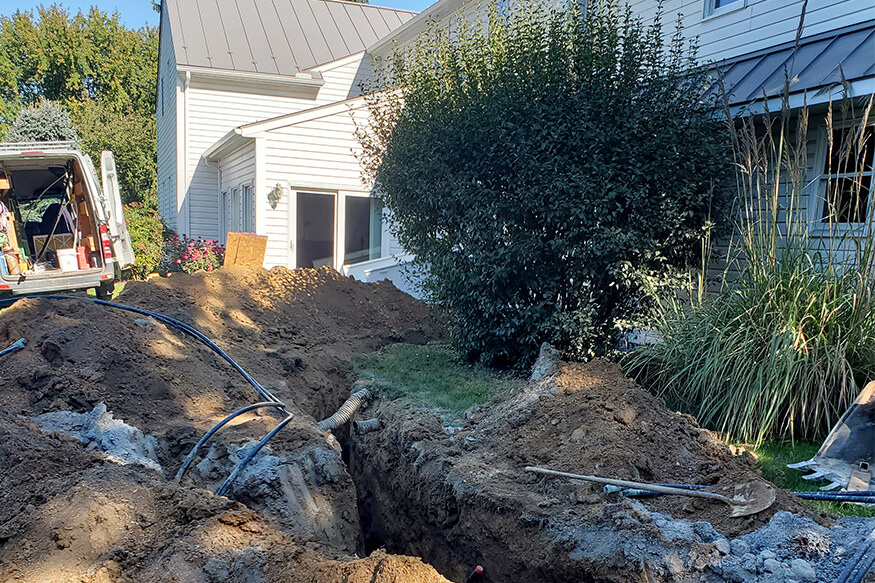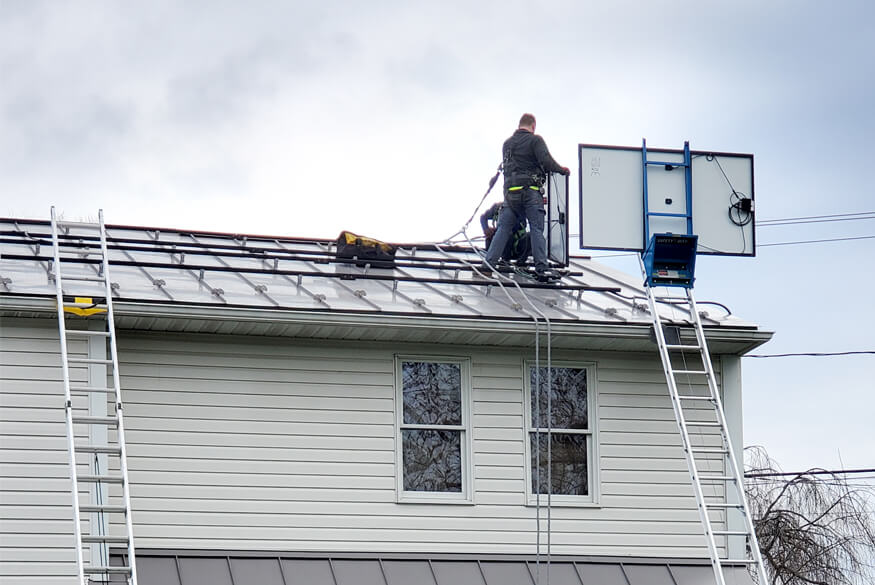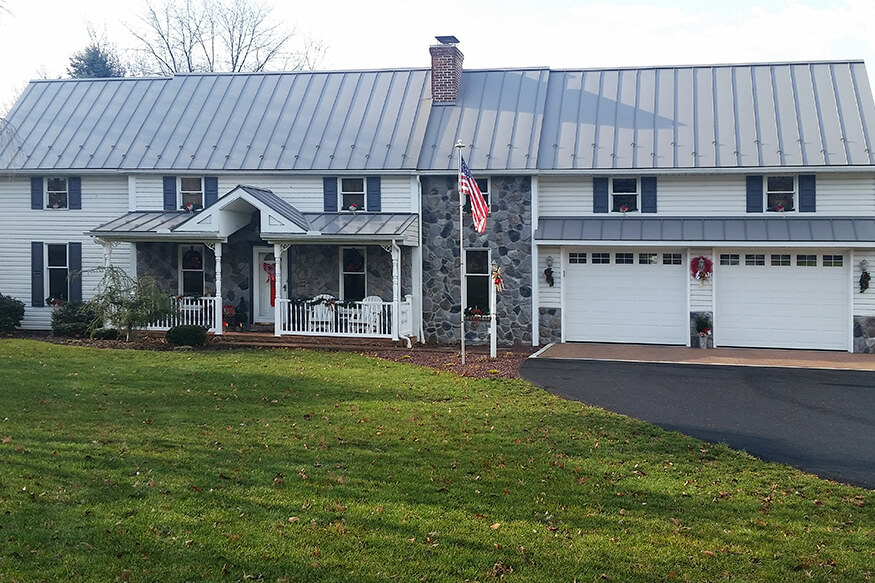After years of paying high monthly utility bills, the Hoffer family of Mt. Joy, PA, realized they needed to make a change in their home efficiency. After researching options, they found that geothermal heating and cooling could not only lower their monthly utility costs but could help them gain energy independence. The Hoffer family wasted no time and installed a geothermal heat pump in their home. They now experience up to 70% reduced monthly heating and cooling bills and up to 40% savings on hot water costs.
“Our geothermal heat pump has done an amazing job. The unit is incredibly quiet and provides excellent humidity control all summer long.” -The Hoffer Family

After doing specific calculations based on the home’s needs, usage, and size, their installer advised the Navigator YT Multi-Position Vertical Packaged geothermal unit. The Navigator YT is recognized by Energy Star as Most Efficient in 2023, meaning this unit delivers cutting-edge energy efficiency and the latest technological innovation.
What do their Savings look like?

Yes, you read that right: Just $100 total cost for cooling over two summers with geothermal; they expect even more savings in coming years.
Happy with their geothermal system, the Hoffers knew they could save even more while advancing their energy efficiency. After reading the, Should You Install Solar PV or Geothermal blog, they knew solar was the next best step.
In December 2022, they installed a PV solar system that was designed to overproduce to help with payback and additional energy usage that could incur. Adding solar transformed their home into a net-positive home, meaning the solar PV array will produce more electricity than what the home uses on an annual basis.
“Solar PV and geothermal are meant for each other and work great together, hand in hand… It was never my plan to live in a home that was a net zero home, let alone a net positive home, but here we are.” - L. Hoffer, homeowner
The Hoffers already see the benefits of solar combined with geothermal.
- In less than a month, they produced 545 kWh, exported 75%, and used 25%.
- On the consumption side, they used 688 kWh, imported 80%, and used 20%.
The solar array went online on 1/7/23. As of 5/17/23, it has produced 5,470 kWh. There are 2,466 kWh that is overproduced and sent to the grid. The Hoffers' last three electric bills have been less than $16.00 monthly, which goes to their "connection fee."
what advice do the hoffers have for those who want to pair geothermal and solar?
The Hoffers say, "Try to be a long-term thinker and educate yourself at the same time. (I know, it wasn't easy for us either). Understand that as long as you own a home, you will be paying utility bills unless you change how you think."
They broke their process down into three steps:
- "Step 1 - Your home should have a tight thermal envelope. If it isn't, fix it if you can. A "blower door" test will show you where all your leaks are. Fix them before you go on to the next step.
- Step 2 - Install a geothermal heat pump. If you fixed your leaks, it may be the difference between a smaller tonnage compressor, like a 3-ton instead of a 4-ton unit, which would cost less upfront and cost less to operate. Don't forget the desuperheater, which gives you free heat for your hot water needs, and know that it works whether in heating or cooling mode.
- Step 3 - Install the solar array. If you have completed steps 1 and 2, you will need fewer solar modules to operate your electrical needs. Things got a bit complex for us during this step, and we will tell you what I did. ( Understand what works for us might not work for you for various reasons). We use approximately 8000 kWh per year for our electrical needs, so for our solar modules of 405 watts each, we would only have needed 20 to accomplish our needs. We oversized our system with 31 modules at 405 watts each for a number of reasons:
- Net metering is available in our area. What we buy from them is the same dollar amount that we give to them per kWh. Customers get reimbursed once a year for excess kWh not used.
- SREC's (solar renewable energy credits), are also available in our area.
- We had enough roof space facing southwest for all 31 solar modules to be mounted onto the standing seam metal roof.
- We are producing extra kWhs that can add to our electrical needs as time progresses and remain net positive over the year. "
They continue saying, "After completing these steps, you should have a net zero home or possibly a net positive home, meaning that what you produce with your solar array within a year exceeds what you use.
The upfront prices of a geothermal heat pump system and a solar array can look scary, but remember, these items should be saving and making you money at the same time. They will be paying you back over time. Think about it, how many items do you own that pay you back in time? The added bonus is that they are environmentally friendly. We have lived in the same home for over 37 years, meaning that the upgrades we did didn't happen overnight, but they did happen. We changed to the geothermal heat pump after 19 years with an air-source heat pump. Try to upgrade items BEFORE they break down. (I know, that part wasn't easy for us either)."
- Step 4 - "We haven't gotten to step 4 yet, which is home batteries for your solar array to charge up. We are waiting at this point. We are watching the V2H (vehicle-to-home) growth. The home batteries are around 10 kw of power. With the V2H growth, We are hoping for bi-directional charger and an EV that will do the bi-directional. Our thinking is that an EV battery will be at least 40 kW of power, and I can use it for transportation and for power outages when they occur. It might be more economical and easier to trade in or sell near its end of life."
even more savings
The Hoffers were excited to take advantage of the federal tax credits for both their geothermal and solar installations. Until 2032, you too can benefit from a 30% federal tax credit for geothermal AND solar, saving big on each installation in the US. The Hoffers encourage net-metering and local Solar Energy Renewable Certificates (SREC) for solar. Net-metering allows them to give and take electricity to and from their utility provider. Once a year, they receive a check for the kWh that they overproduce. Keep in mind that every state is different. See if your state qualifies for the SREC and net metering.
"THANK YOU to all at Enertech for its GeoComfort Navigator series geothermal heat pump system and all who helped make our journey possible.” - The Hoffers
We at Enertech love seeing the benefits and hearing from our amazing customers with their geothermal, air source, and solar energy systems. See how to incorporate geothermal or solar into your next home or building project. Install an industry-trusted and home-owner-preferred geothermal heat pump.
If you are interested in learning more about us and how our products can help you, please reach out!
